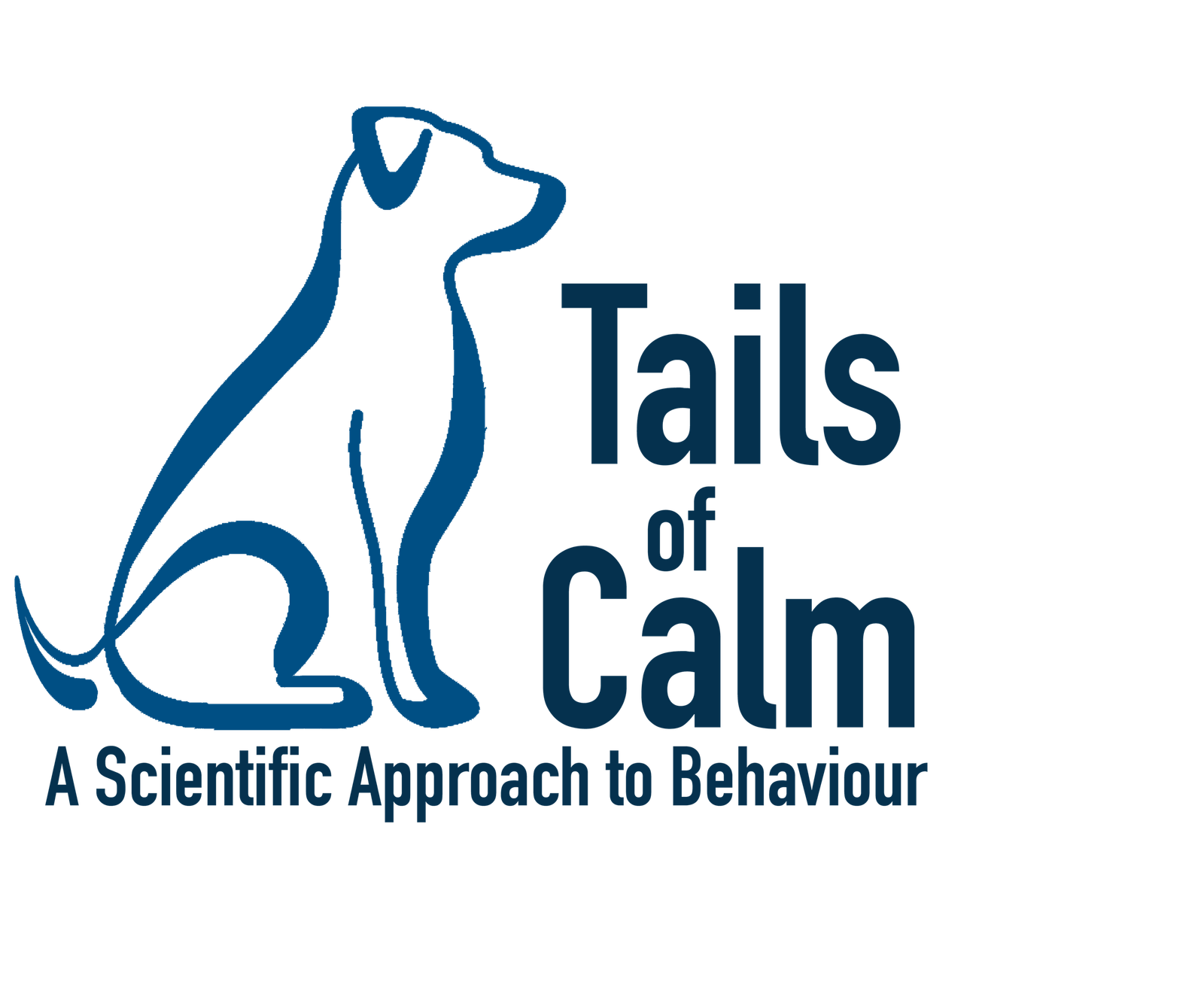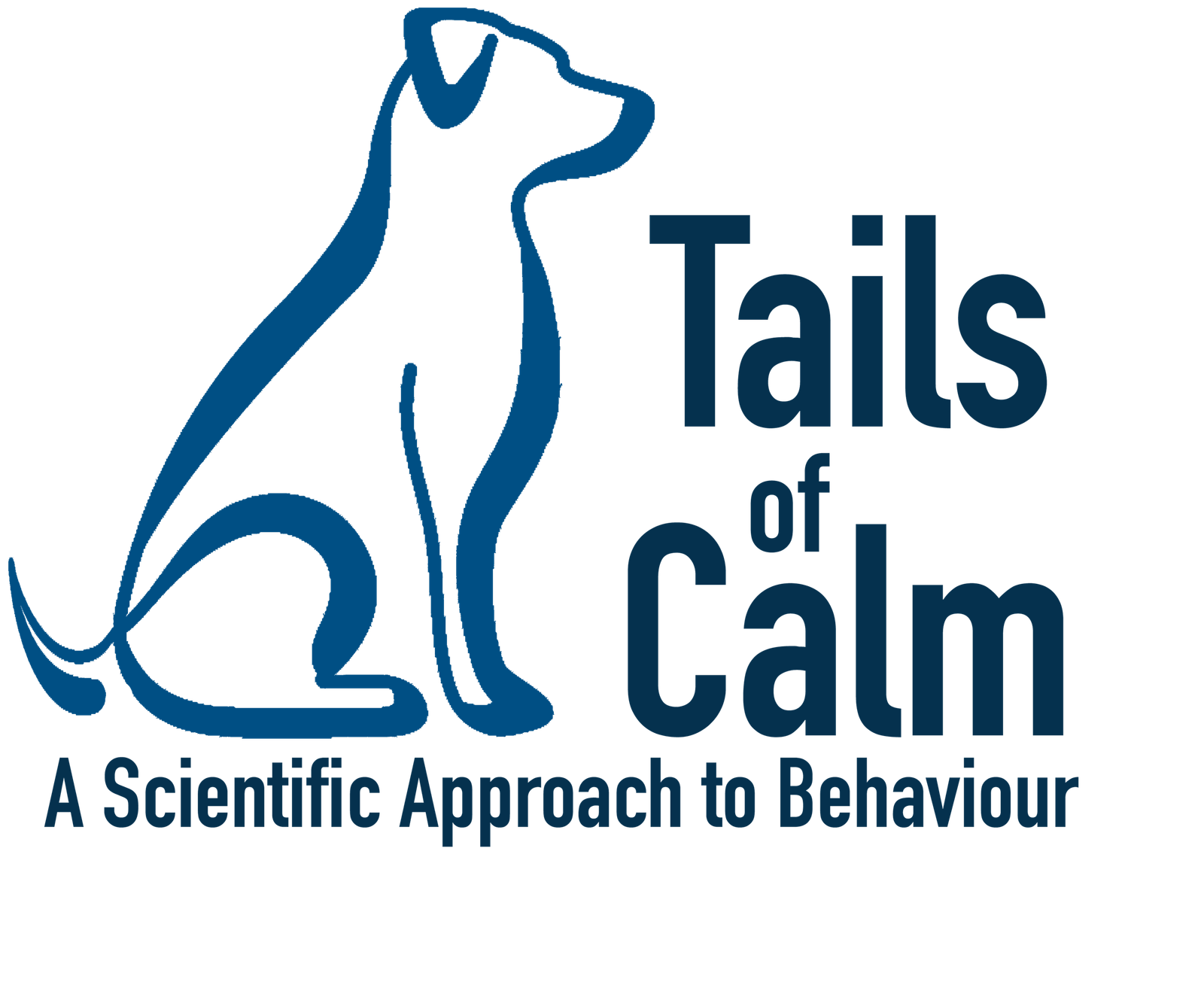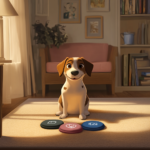Puppy Essentials
A Guide For Puppies and Beyond: Building a Strong Foundation
K Miri
Bringing a puppy into your home is an exciting and rewarding journey. The early months are a critical time for learning, growth, and forming positive associations that shape your puppy’s future behaviour. This booklet provides practical, science-based guidance to help you navigate this stage with consistent training and clear communication.
From socialization and house training to impulse control and cooperative handling, each section is designed to support positive development through structured, consistent guidance. By focusing on reinforcement-based training and real-life skills, you’ll help your puppy grow into a well-adjusted, resilient companion while strengthening the bond you share.
With patience and consistency, you’ll build essential skills and a trust-based relationship that will last a lifetime—creating a strong bond and a confident, cooperative dog.
Together, let’s make puppyhood a joyful and enriching experience for both of you!
Related Videos
Foundation Skills as Pillars of Trust Building
Communication Fundamentals
- Reinforce Core Behaviours: Use positive reinforcement to build reliability and confidence in key behaviours like sit, stay, come, and leave it.
- Short, Focused Sessions with Gradual Distractions: Keep training brief, engaging, and in a low-distraction environment at first, gradually increasing distractions to set the dog up for success.
- Clear, Consistent Communication: Use simple, unified verbal and hand signals across all household members to strengthen understanding and avoid mixed signals.
- Routine & Real-Life Practice: Establish predictable daily routines and integrate training into everyday activities (e.g., before meals, at doors) to build real-world reliability.
Consequences of Poor Communication
- Communication Gaps, Frustration & Weak Learning: Inconsistent cues, lack of repetition, and inadequate reinforcement create confusion, insecurity, and frustration, slowing learning and reducing the dog’s willingness to cooperate.
- Problem Behaviours & Escalation: Without clear guidance, dogs may resort to jumping up, ignoring cues, demand-barking, leash pulling, or counter-surfing to gain attention, often leading to further escalation of behaviours and guardian frustration.
- Weakened Trust, Structure & Generalization Issues: Repeated miscommunication, unclear boundaries, and inconsistent practice erode trust, making training more difficult. Dogs struggle to understand expectations and apply learned behaviours in different environments.
Article Recommendation: Fostering Cooperation, Trust, and Reliability Rather Than Control or Obedience – This article explores how prioritizing trust and clear communication over control-based training creates a more willing and confident companion.
House Training
Bathroom Routines & Accessible Areas: Consistency is key to house training. Establish a predictable schedule and reward outdoor elimination immediately and consistently with praise or treats. Ensure quick, easy access to designated elimination spots with consistent surfaces (e.g., grass or pee pads) to build reliable toileting habits.
Supervision & Prevention: Closely monitor the dog and use pens, baby gates, or controlled access to prevent accidents. Restrict access to areas where accidents are more likely while supporting the development of appropriate toileting habits.
Proper Accident Cleanup: Use enzyme-based cleaners to thoroughly remove odours and prevent repeat marking, ensuring the scent doesn’t reinforce indoor toileting.
Low-Stress, Secure Outdoor Spaces: Provide a quiet, distraction-free potty area to support relaxed and successful elimination.
Lack of Supervision & Unclear Expectations: Insufficient oversight during key learning stages and infrequent access to appropriate potty areas can lead to accidents and confusion about where elimination is acceptable. Unpredictable schedules and a lack of positive reinforcement for outdoor toileting prevent the development of reliable bathroom habits.
Consequences of Poor House Training
Learned Surface Preferences & House Training Regression: Repeated indoor accidents can create a preference for specific surfaces (e.g., rugs, carpet), making it harder to establish proper elimination habits. Without consistent reinforcement, previously learned habits can break down, requiring a return to foundational training methods.
Elimination Anxiety, Fear-Based Avoidance & Behavioural Consequences: If accidents are punished, dogs may associate toileting with fear, leading to secretive elimination, reluctance to go in front of guardians, or holding behaviours that cause discomfort. Dogs that habitually hold in elimination may experience trigger stacking, making them more prone to stress-related behavioural issues.
Stress-Related Urination & Marking: Anxiety, stress, or perceived threats can trigger submissive urination or marking, complicating house training efforts and making elimination less predictable.
Crate Comfort
Positive Crate Introduction & Associations: Present the crate as a secure, comfortable space using positive reinforcement. Feed meals inside and provide chew toys to create a sense of safety and relaxation.
Gradual Duration Increase & Voluntary Use: Allow free exploration with the door open initially, then slowly extend crate time while ensuring the dog remains calm and comfortable.
Pre-Crate Exercise & Relaxation: Provide physical and mental enrichment before crate time to promote relaxation.
Comfort & Environment: Place the crate in a quiet, low-traffic area where the dog feels included without overstimulation. Add soft bedding, familiar items, and, if safe, water for comfort. If needed, cover the crate partially with breathable fabric to reduce visual distractions.
Avoid Negative Associations: Never use the crate as punishment to prevent fear or avoidance.
Consequences of Improper Crate Training
Resistance, Fear of Confinement & Separation Anxiety Risk: Whining, barking, crate avoidance, or escape attempts signal discomfort, which can lead to lasting negative associations and anxiety. If confinement stress is not addressed, it may contribute to or worsen separation anxiety, making it harder for the dog to feel secure when left alone.
Emotional Sensitivity & Crate Distress: Underlying anxiety or attachment issues can significantly heighten distress when confined, making crate training more difficult and increasing panic behaviours when left alone. Addressing these emotional needs is essential for successful crate use.
Negative Associations from Punishment & Overuse: Using the crate for punishment or excessive confinement fosters fear and resistance, making the crate a source of stress rather than a place of security.
Rushed Introduction, Unmet Needs & Risk of Injury: Skipping a gradual introduction, failing to meet physical and mental needs beforehand, or placing a stressed dog in a crate too soon can lead to restlessness, frustration, escape attempts, and self-injury from chewing, pawing, or clawing at the crate.
Article Recommendation: Open-Door Policy: Safety Without Confinement – Explore how redefining crates as true safe spaces—built on choice, comfort, and trust—can help dogs feel secure without restriction.
Bite Inhibition
Safe Play Spaces: Create a secure play environment with soft surfaces to reduce the risk of injury and prevent overstimulation. Prevent access to household objects (e.g., shoes, furniture) to discourage destructive chewing.
Encourage Calm Play: Foster calm interactions and discourage rough or overly physical play to prevent overstimulation and reduce the likelihood of biting.
Bite Control Through Redirection: Encourage gentle mouth use by redirecting biting onto appropriate chew toys and incorporating structured play sessions to teach appropriate play behaviour.
Encouraging Self-Regulation & Monitoring Arousal Levels: Recognize early signs of overstimulation (e.g., rapid escalation in energy, increased biting intensity) and allow natural breaks in play rather than constant engagement. Proactively pause or redirect play before unwanted behaviours develop, helping the dog learn to regulate excitement levels.
Immediate Response to Rough Biting: If biting becomes too rough, pause play immediately and withdraw attention to reinforce that only gentle mouth use allows play to continue.Teething Relief & Chew Toy Engagement: Provide a variety of appropriately textured chew toys to satisfy teething needs and promote appropriate chewing habits. Regularly rotate toys to maintain interest and prevent boredom-driven mouthing.
Consequences of Poor Bite Inhibition
Persistent Rough Play, Overarousal & Poor Development: Without bite control, dogs may continue rough or hard biting during play, especially when excited. Overstimulation can escalate into frustration-driven or defensive biting, increasing the risk of injury. Puppies separated too early or lacking feedback from littermates may fail to develop appropriate bite pressure.
Frustration-Driven Biting & Handling Challenges: Dogs without structured bite inhibition may resort to biting as a way to communicate frustration or seek attention. A lack of bite control can also make handling, grooming, and medical procedures more difficult, as the dog may react with forceful biting instead of milder warning signals.
Destructive Mouthing & Strained Guardian-Dog Relationship: Without appropriate chew outlets, teething discomfort can lead to excessive biting and destructive behaviours. Persistent mouthing or biting can also cause frustration for guardians, straining the relationship and making training efforts more challenging.
Article Recommendation: Open-Door Policy: Safety Without Confinement – Explore how redefining crates as true safe spaces—built on choice, comfort, and trust—can help dogs feel secure without restriction.
Socialization & Emotional Resilience
Socialization
Gradual, Positive Exposure with Controlled Practice: Introduce the dog slowly to new people, dogs, environments, and novel experiences at a comfortable pace. Pair each new encounter with high-value treats to create positive associations. Keep sessions short, frequent, and structured to prevent overwhelm while ensuring the dog remains comfortable and engaged. Avoid forced interactions, overexposure, or rapid progression, as these pressures can lead to fear and anxiety, potentially escalating to defensive or aggressive behaviours.
Safe & Varied Socialization Environments: Expose the dog to different people, animals, sounds, and surfaces in low-traffic, low-stress settings before gradually increasing complexity. Unpredictable or negative experiences, rough handling, or exposure to intimidating environments can heighten stress and create long-term sensitivity.
Provide Safe Observation & Retreat Areas: Allow the dog to observe interactions from a secure distance before engaging directly. Ensure a retreat area is available when possible so the dog can move away if needed, preventing feelings of entrapment, which can intensify fear and increase the likelihood of defensive behaviours.
Consequences of Lack of Proper Socialization
Missed Socialization Window & Negative Associations: Missing the critical socialization period (3-14 weeks) or experiencing negative encounters can lead to long-term fear, anxiety, and difficulty forming positive associations with new people, objects, and environments. Poor exposure may also cause exaggerated fear responses to everyday stimuli, such as traffic, household items, or unfamiliar objects.
Past Trauma, Trust Issues & Routine Challenges: Early-life trauma, neglect, or lack of positive experiences can create deep-seated fear and heightened sensitivity to unfamiliar situations. This can make routine activities like vet visits, grooming, and walks highly stressful. Poor socialization may also lead to difficulty interpreting canine communication, increasing the risk of conflicts with other dogs.
Increased Stress, Poor Adaptability & Overdependence on Routine: A lack of socialization can elevate stress levels, making it harder for the dog to adjust to changes. Dogs may become overly reliant on familiar people and environments, increasing the risk of separation anxiety and difficulty coping with novelty.
Reduced Coping Skills & Increased Reactivity: Dogs lacking positive exposure may struggle with resilience, leading to higher stress accumulation (trigger stacking) and an increased risk of reactivity or shutdown behaviours when faced with overwhelming situations.
Fear-Based Reactivity & Escalation to Aggression: Without gradual exposure, dogs may react with avoidance, growling, barking, lunging, or cowering when faced with new situations. Over time, these fear-based reactions can escalate into defensive aggression.
Confidence Building
Recognize & Respond to Body Language: Be aware of subtle stress signals to prevent anxiety from escalating into fear-based behaviours or reactivity.
Building Trust Through Success: When a dog is repeatedly placed in situations where they can succeed, they build confidence and trust in the guardian who set them up for success. This strengthens the bond and increases cooperation.
Promote Secure & Positive Exploration: Provide designated areas with a variety of novel stimuli, encouraging the dog to engage with new environments, objects, and surfaces. Use food rewards, toys, and interactive play to build positive associations while reinforcing bravery and curiosity.
Foster Autonomous Navigation: Allow the dog to tackle challenges independently, avoiding forceful intervention to build confidence.
Provide a Secure Retreat & Monitor Stress: Ensure the dog has access to a safe spot when overwhelmed, allowing them to regain confidence at their own pace. Monitoring body language helps prevent stress from accumulating and interfering with learning.
Consequences of Limited Exploration
Avoidance, Lasting Apprehension & Reduced Confidence: Early negative experiences or a lack of exposure to new environments, objects, and mild challenges can create lasting apprehension, leading to hesitancy and cowering. This discourages future exploration and hinders the development of problem-solving skills.
Chronic Anxiety & Fear-Based Behaviour: Generalized anxiety and ongoing stress can contribute to fear-based behavioural issues, which may escalate into reactivity or aggression.
Learned Helplessness & Increased Stress: When a dog repeatedly feels unable to influence or escape stressful situations, they may develop learned helplessness, where they stop attempting to problem-solve or engage with their environment leading to passivity, withdrawal, and heightened stress.
Increased Risk of Behavioural Issues: A lack of confidence can contribute to additional behaviour problems, ranging from separation anxiety to phobias, including noise sensitivities and fear-based reactions.
Article Recommendation: For a deeper dive into this concept and its impact on behaviour, read “Learned Helplessness in Dogs: When Fear Replaces Problem-Solving”.
Impulse Control
Low-Arousal Environment: Minimize excitement and overstimulation to help the dog settle more easily and maintain better impulse control.
Self-Control & Delayed Gratification: Teach exercises like “wait” and “leave it” to build impulse control, reinforcing patience through structured interactions rather than direct excitement-inducing rewards.
Encouraging Calm Before Activity: Ensure that calmness naturally precedes exciting activities like meals, playtime, or walks, preventing overarousal before engagement.
Controlled Access to Stimuli: Provide access to high-value activities (e.g., play, walks, visitors) only when the dog is in a neutral, relaxed state to support self-regulation without triggering overexcitement.
Patience Through Enrichment & Waiting Opportunities: Use interactive food toys, slow feeders, and built-in waiting moments before meals, toys, or door exits to encourage problem-solving and self-regulation.
Predictability Without Fixed Timing: Maintain general patterns of activity (e.g., rest, play, outings) while varying exact times to prevent anticipatory excitement and promote emotional flexibility.
Consequences of Poor Impulse Control
Guardian Frustration & Strained Relationship: A lack of impulse control makes daily interactions difficult, leading to frustration, inconsistent responses, and a weakened bond.
Confusion, Escalation & Reactivity: Dogs who don’t understand expectations struggle to distinguish appropriate from inappropriate behaviours, leading to stress and frustration. Over time, this frustration can intensify, turning behaviours like jumping, barking, and leash pulling into reactivity, fear-based responses, or even aggression.
Mismanagement of Self-Soothing Behaviours: Licking, spinning, excessive chewing, digging, or excessive sniffing may emerge as coping mechanisms. If these are removed without addressing frustration or providing appropriate alternatives, it can feel like punishment. Forcing structured cues (e.g., sit-stay) as a replacement without considering emotional regulation may further increase stress.
Article Recommendation: Building good behaviours early is far easier than undoing ingrained, frustration-based habits that become coping strategies, as explored in the article “Building Behaviours vs. Undoing Habits: Why Prevention is Easier Than Correction.”
Managing Possessions & Preventing Resource Guarding
Hand-Feeding & Voluntary Exchanges: Use hand-feeding and reward-based item exchanges to create positive associations with human handling of food and possessions.
Introducing Fillable Toys & Teaching Trade Cues: Offer fillable toys (treat-dispensing toys, or bones that can be coated with peanut butter) to help the dog associate surrendering an item with receiving a higher-value item. Teach cues like get it, leave it, and drop it to strengthen this concept.
Set Puppies Up for Success: Puppy-proof the environment by removing items you don’t want the dog to access, preventing possession struggles that could escalate into resource guarding. Managing access to high-value items early reduces the likelihood of conflict.
Respectful Handling & Prevention of Resource Guarding: Avoid forcibly taking objects or abruptly removing food, toys, or chews, as this can create tension and defensive behaviour. Instead, focus on building trust through positive interactions around valued resources.
Positive Trade & Return Exercises: Teach a trade system by exchanging low-value items for high-value rewards and briefly removing and returning valued items to build trust.
Managing Resources & Preventing Conflict: Feed in a calm, low-traffic area and, in multi-dog households, provide separate feeding stations. Store high-value items out of reach.
Consequences of Poor Resource Guarding Prevention
Onset of Defensive Guarding & Escalation to Aggression: Growling, snapping, or biting when approached near food, toys, or valued objects can indicate emerging resource guarding behaviours that can intensify into serious aggression, increasing the risk of injury to humans or other animals.
Cumulative Stress and Anxiety: Anxiety around food or possessions may create tension during mealtimes and when valued resources are present. This stress can spill over into other aspects of daily life, as anxiety tends to have a cumulative effect, impacting overall behaviour and emotional stability.
Erosion of Trust & Handling Resistance: Repeated conflicts over resources and limited positive interactions around food and possessions can weaken the dog’s trust in guardians, leading to ongoing insecurity and avoidance when valued items are handled.
Early Life Competition & Negative Handling: Exposure to high competition in large litters or multi-pet households, combined with forced removal of possessions, can reinforce guarding tendencies.
Physical & Environmental Well-Being
Leash Connection
Beyond the walk: A walk is more than just exercise or a chance to eliminate—it’s an opportunity for exploration, engagement, and mental stimulation and should allow dogs to engage in species-appropriate behaviours, helping them decompress from the unnatural constraints of living with humans.
Start in Low-Distraction Areas: Begin indoors or in quiet spaces to build focus and confidence
Reward-Based Reinforcement: Frequently reward relaxed walking.
Proper Equipment: Use a front-clip harness for control without discomfort.
Gradual Exposure: Introduce distractions slowly while maintaining engagement.
Gentle Handling: Avoid forceful corrections to prevent stress.
Decompression Opportunities: Allow sniffing breaks to reduce frustration.
Consequences of Poor Leash Connection
Unmet Enrichment Needs: When walks are stressful instead of fulfilling, dogs may lack proper mental and physical enrichment, leading to unwanted behaviours inside and outside the home.
Physical Strain & Injury: Pulling can strain the dog’s neck, shoulders, and joints, risking injury, especially with a collar. Handlers may also experience falls or muscle strains.- Frustration, Reactivity & Arousal: Chronic pulling can escalate into lunging, barking, or overexcitement due to frustration, restraint, or overstimulation from stimuli like dogs, people, or vehicles.
- Stress & Bond Erosion: Struggles on walks increase stress for both dog and guardian, diminishing enjoyment and trust.
- Reinforcement & Inconsistency: Moving forward while pulling reinforces the behaviour, while poor leash techniques or inconsistent reinforcement can confuse the dog and encourage pulling.
Article Recommendation: Learn how to transform routine outings into fulfilling experiences in “Beyond the Walk: Creating an Enriching Leash Experience.”
Article recommendation: As discussed in Aversive Enrichment, frustration from unmet needs can manifest in destructive behaviour, excessive barking, or hyperactivity.
Handling and Grooming
Respect the Dog’s Body Language & Communication Cues: Monitor for signs of discomfort, check for any pain before handling, and allow breaks as needed to prevent negative associations.
Gradual Introduction & Positive Reinforcement: Introduce touch slowly, pairing gentle handling with treats to create positive associations.
Routine Practice: Regularly handle paws, ears, and other body parts to prepare for grooming and vet care.
Short, Low-Stress Sessions: Keep sessions brief, relaxed, and end on a positive note to build confidence.
Choose a Calm, Appropriate Environment: Select a quiet, well-lit, low-distraction space where the dog feels familiar and has had previous positive experiences. Ensure a calm atmosphere by using non-slip surfaces for stability, keeping tools organized for smooth sessions, and minimizing loud noises to prevent anxiety and startle responses.
Consequences of Poor Handling and Grooming Experiences
Lasting Sensitivity & Fear: Limited positive handling in puppyhood or repeated negative experiences during grooming or medical procedures can lead to long-term touch sensitivity, handling-related anxiety, and resistance to care.
Avoidance & Resistance: Stiffening, struggling, fleeing, or avoiding touch during grooming or vet visits can signal discomfort or fear.
Defensive Responses: If a dog feels threatened, attempts to escape handling may escalate to defensive behaviours such as growling, snapping, or biting.
Article recommendation: It’s important to let dogs express their emotions through body language and low-grade behaviours. If these signals are ignored or punished, dogs may escalate to higher levels of reactivity, as discussed in Zero to 60 in One.
Proper Exercise
Tailored & Balanced Exercise: Provide daily physical activity suited to the dog’s age, breed, and needs, combining free play, structured walks, and mental enrichment. Monitor energy levels to adjust routines and prevent overexertion or under-stimulation.
Safe & Varied Activities: Offer secure play spaces, safe walking areas, and diverse options like leash walks, off-leash time, or scent work while ensuring adequate rest to prevent fatigue and support overall well-being.
Consequences of Inadequate Physical and Mental Exercise
Restlessness, Behavioural Issues & Anxiety: Hyperactivity, difficulty settling, destructive behaviour, excessive attention-seeking, or compulsive actions like tail-chasing and self-licking can stem from inadequate exercise, mental stimulation, or social isolation.
Exercise Mismatch & Physical Health Risks: Insufficient or inappropriate activity for the dog’s age, breed, and energy level can lead to obesity, underdevelopment, or injury from excessive strain.
Lack of Mental & Physical Balance: Over-reliance on physical exercise without mental enrichment, poor regulation of activity and rest, or missed early signs of stress can contribute to long-term behavioural and health issues.
Article recommendation: Recognizing subtle signs of stress, frustration, or overarousal allows for proactive adjustments to exercise, enrichment, and rest, preventing escalation into more serious behavioural concerns.





